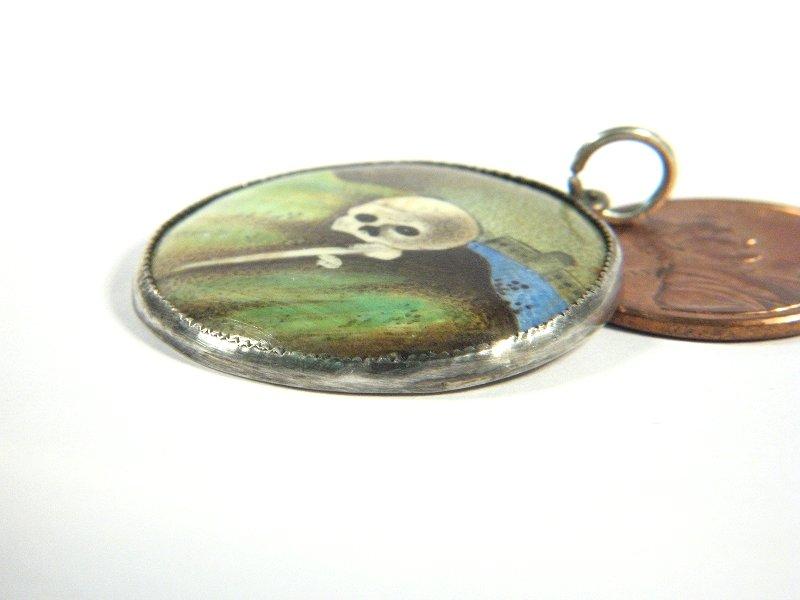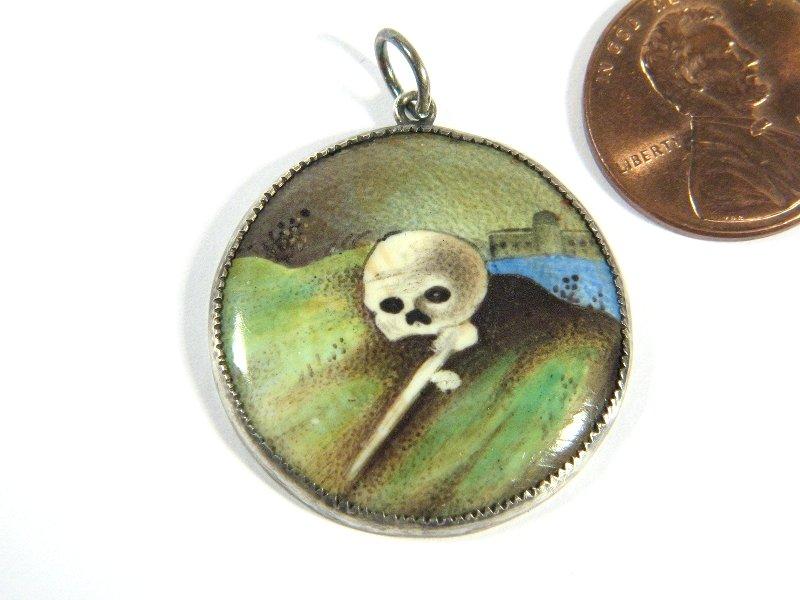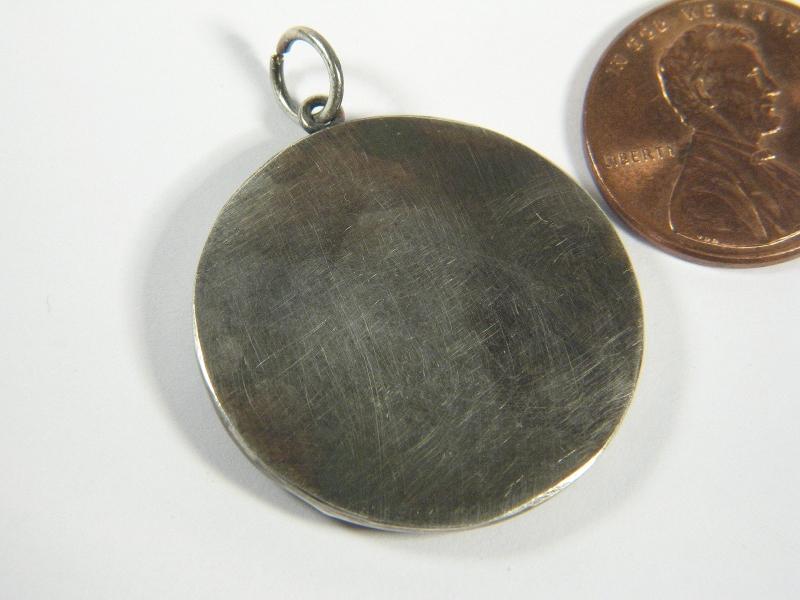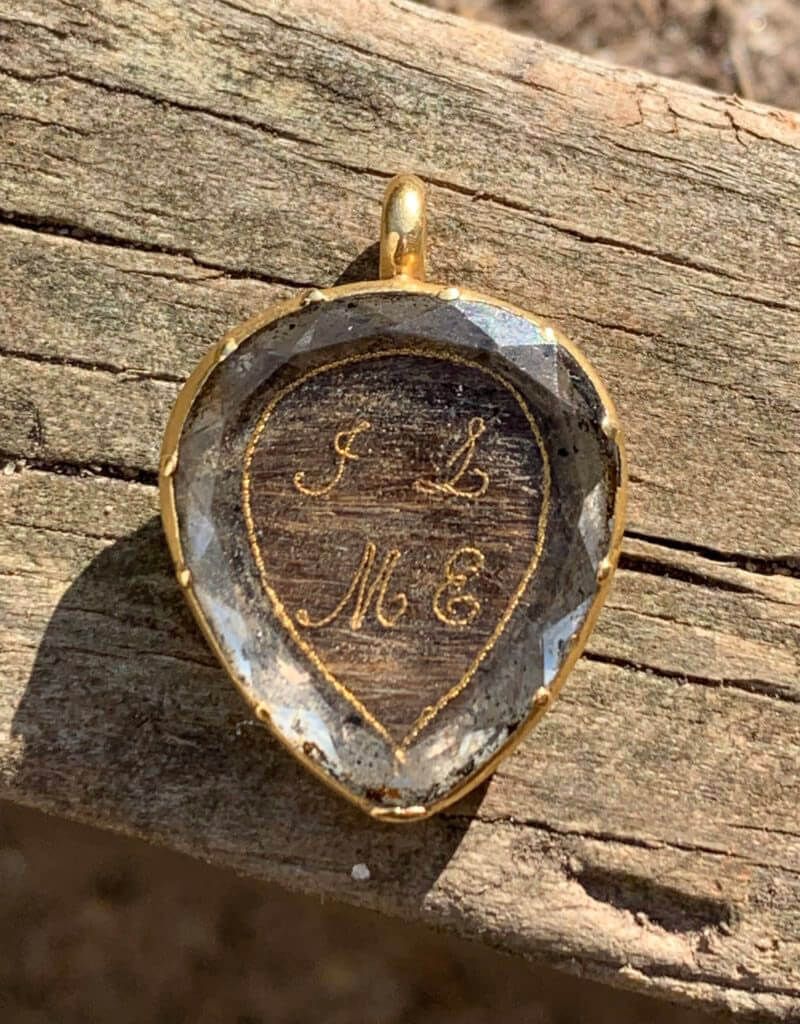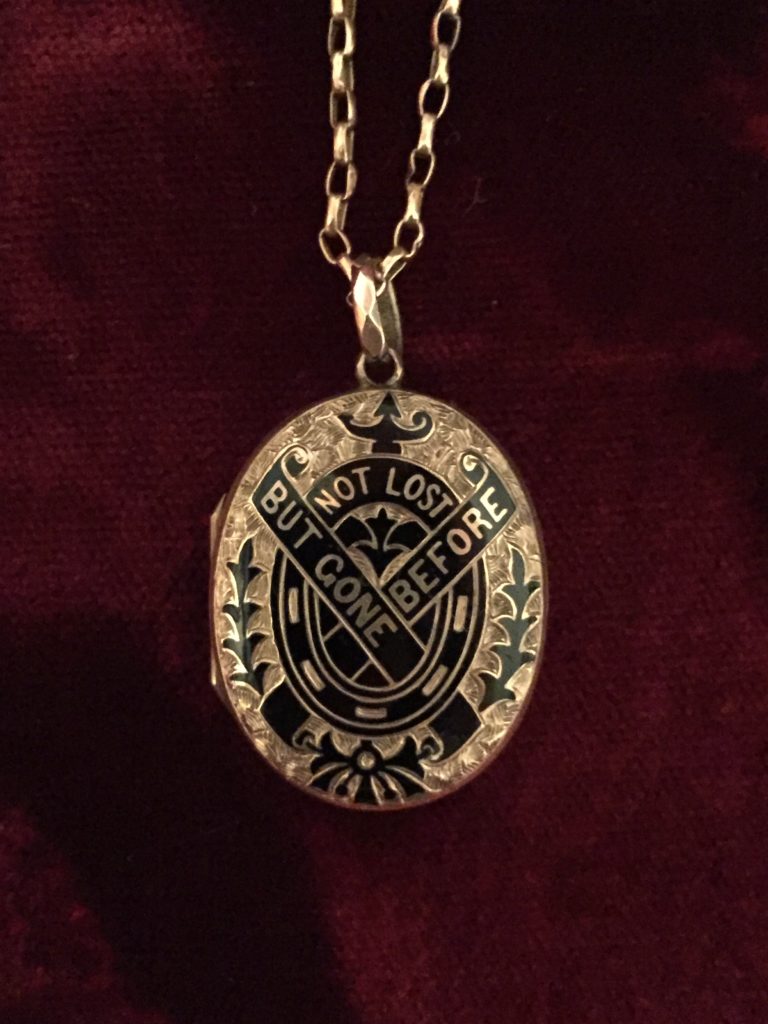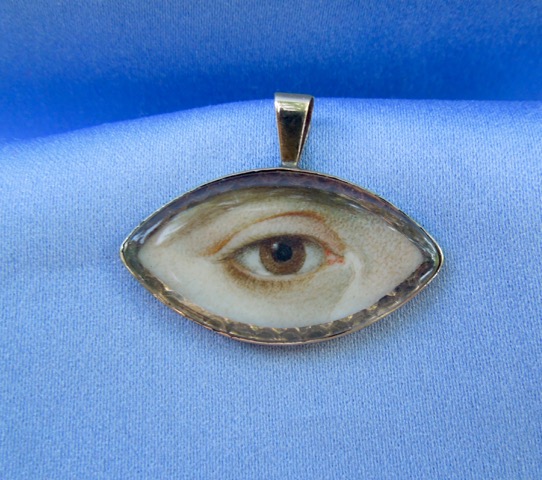Defining Memento Mori Though Presentation: 18th Century Skull on Pendant
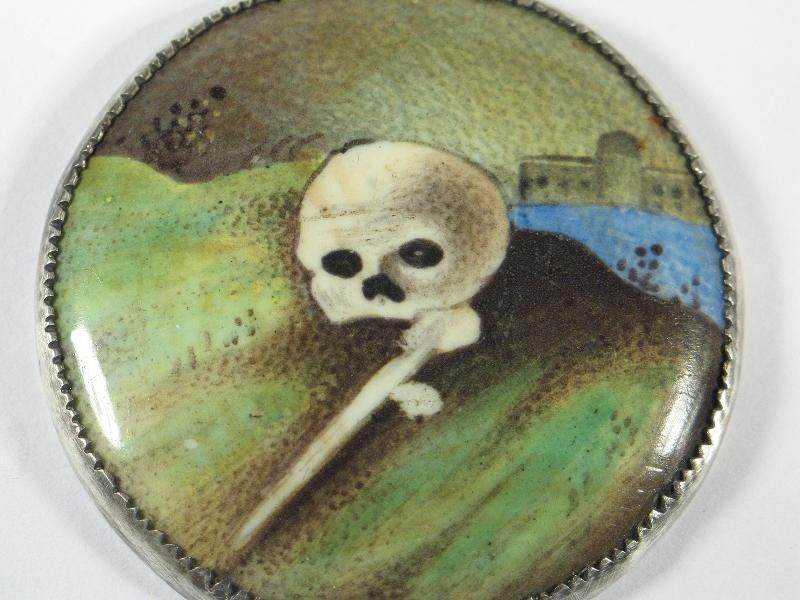
If the piece was made to deceive the person buying it by being constructed as a forgery or replica, then there is ample reason for it to be justified as a fake. However, many times, it’s a lack of the simple education surrounding the knowledge of a piece that can change the perspective of a dealer or collector and reappropriate the piece to be more realistic to its intent.
This brings us to the symbolism surrounding Memento Mori and how often a piece can suffer by the connotations surrounding that term. Obviously, the symbols of death are the first things that spring to the non-collectors mind when discussing ‘mourning jewellery’ and that really must be dispelled before the conversation can continue. Even some collectors covet any particular piece with the skull and crossbones symbolism above all else and immediately put the term ‘mourning’ towards it, or simply consider it to be about death. However, the Memento Mori symbols have been used in jewellery since before the term was coined, due to their obvious relation to the intrinsic nature of life and death. Skulls, bones and the remains we leave behind are obvious reminders of our own mortality.
And it is this reminding us of our mortality that changes the perspective for what we know as ‘Memento Mori’, in that wearing symbols of these relics of the deceased outwardly project that the person wearing them is aware of their own mortality. Much of this came around during the Enlightenment, with a new perspective upon the value of the self, rather than simply living to be judged. However, though this thought was popular with philosophers and aristocracy, there was certainly the idea of still being judged, but rather than living to die, a reversal of putting the importance of maximising living and being judged for that occurred.
But then the culture of mourning came along and appropriated these symbols, which leads us to the 17th century ideal of Memento Mori that is commonly recognised today. These symbols, though affiliated with mourning culture were still used for their 15th and 16th century purposes as well, from fraternal organisations’ jewellery and paraphernalia to simple tokens of statement of living.
Which brings us to this piece. Dating (at least the central panel) from around the mid 18th century and set in European sterling silver, this ‘Memento Mori’ pendant/fob is set with a wonderful rounded hand painted vitreous enamel panel (quite probably on copper) depicting a skull and leg or arm bone on a hillside. Pieces like this certainly do fall under the intent of the term ‘Memento Mori’ and weren’t made to pretend to be anything they’re not, in terms of replicating the ideal of an earlier time or created for memorialise. This piece was created most likely as a charm purchased by a gentlemen on a Grand Tour of the Continent, simply to be a statement of living. A token of mortality, and essentially, that’s what it is predominantly about.
Which leads the collector to fall back on understanding the time and nature of the piece, when it was made and always question why. Why does it look like it does? Who would have worn it? Never apply contemporary thought or even mainstream thought to a piece, but try and break away the pomp surrounding it to get to the facts. And, as a great man once wrote, when you have eliminated the impossible, whatever remains, however improbable, must be the truth.




